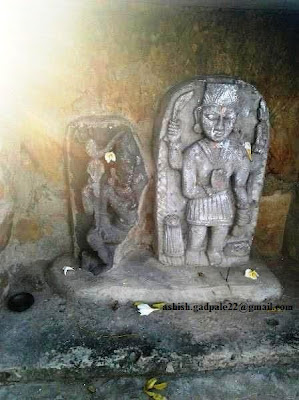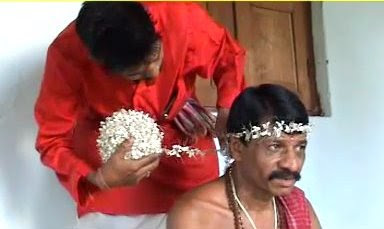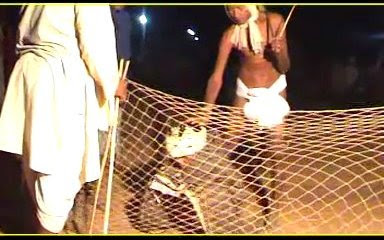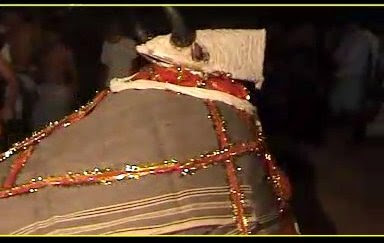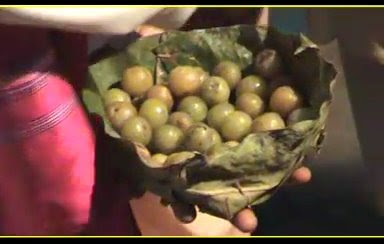Dodrepal Temple
Bastar is one of the ideal places regarding tourism in Central India. As a tourist, for sightseeing places, some people like waterfalls; some opt for valleys, while some like to visit temples and other monuments. But there are very few areas which possess a combination of all these variations, and make themselves even more worthy in comparison to other tourist places…One such desirable destination is Dodrepal Temple.
Figure: Dodrepal Temples photograph by: Ashish Gadpale
Where and How to reach?
29kms to the south of Jagdalpur(along the Geedam road) lies the Mavlibhata village. Just before Mavlibhata, there is a way on the left side of the highway road which goes directly to Dodrepal temple. Another alternate is the way which is 5km inside Mavlibhata leads to Village Dodrepal; covering a couple of kms more, the way leads to this glorious Dodrepal temple of Lord Vishwakarma.
Regarding boarding and lodging, there are a lot of luxurious hotels and motels in Jagdalpur. And few of them offer exciting tour packages also. Chhattisgarh tourism board and District forest department have made rest and guest houses for the comfort of tourists. But as this a remote area, tourists are requested to come along with food and other stuffs.
Archeological and Historical Importance:
Right from its past, Bastar division is a proof of its glorious history. The ancient capital of Bastar kingdom, Barsur and its temples and museum, ancient monuments of Dantewara(Madhota Tarla), Kesharpal, and Bastar village, a series of temple relics and Baudhchaitya vihar found after excavation of the places like Bhongapal and Gadh-dhanora tells about the rich culture and tradition, art, architecture and sculpture of the area. In addition to the art and sculpture of the great dynasties of Bastar, the temples of Dodrepal can be one place of attraction for the interested tourists and archeologists.
It is believed that these Dodrepal temples belong to the age around 11th century, when the Nagwanshi rulers used to rule over Barsur and adjoining areas and started making temples and monuments. In the nearby village Errakote, Archeologists have found a telugu manuscript carved on a piece of rock slab, which appears as incomplete, but give some information of a Nagwanshi ruler. As the manuscript is on a broken rock slab, archeologist cannot get proper information on the name of king, only a part of the name “Tibhushan” is left there, where we add prefix like ‘Nrip’ or ‘Kshi’ and it may become “Nripatibhushan” or “Kshitibhushan”. Hence this fact also tells that once there was a reign of Nagwanshis up to Dodrepal, Errakote, Chingitarai,Chadragiri, Bispur e.t.c or they would have liked to visit these places.
Art and Sculpture:
On the east of Dodrepal, there are three ancient temples built one beside the other, with the same height of the external floor stage, out of which one temple, due to lack of proper attention by local bodies and growth of tree from the middle of it, broke up and got ruined, but still relics are there. Recently local villagers took the initiative and formed a stage around that tree and placed all the sacred monuments and idols there.
Fig: Centrally placed Shiv-ling, Dodrepal temple Photograph by: Ashish Gadpale
The other two temples are somewhat in better condition but if they will not be properly cared or conserved, they too will get ruin. Among one of these two temples, there is centrally placed idol of Shiv-ling. From the different idols and monuments of the ruined temple, three of them are very important, out of which two are in devastated form, while other good one is believed to be the idol of Lord Vishwakarma, who is believed to be the God of art and sculpture(in Hindu Mythology). In this way, there is only one Lord Vishwakarma temple in this division.
Fig: Ancient idol of Lord Vishwakarma Photograph by: Ashish Gadpale
This idol is around 22inch high and carved on a thick slab of rock. Local people told that before placing this idol inside the temple, there was one idol of Goddess Danteshawri of around 4.5 ft high, but as this site is out of the village, someone stole that sacred idol of Goddess Danteshwari. Villagers tried their best, but couldn’t manage to find it.
From the outer view, the design of temples looks simple and up to 4ft from the base, the temples look square shaped, above which they bend to form a spire towards roof side. The top of the roof is covered by a circular plate like formation.
Conclusion:
Making your tour more memorable, you can also visit some nearby tourist sites in series like the beautiful Aranyak Cave, Mandawa Waterfall. And as all these places are very near to Jagdalpur, you don’t have to invest your whole day for site seeing. So you can enjoy site-seeing and save your time also. As a geology student, I have a great interest in archeology also and I can say, these temples can be a great learning experience for archeologists and interested tourists like us. In addition to this, I should say, Government should try to renovate and conserve this site, for to be a best archeological example for the coming generations.
Fig: Mandawa waterfall along with its valley Photograph by: Jeet Singh Arya
Note: Last, but not the least, I would like to thanks my friends Ashish Gadpale and Jeet Singh Arya who gave me valuable information and photographs of this adorable site and helped me in every possible way to create this blog.













